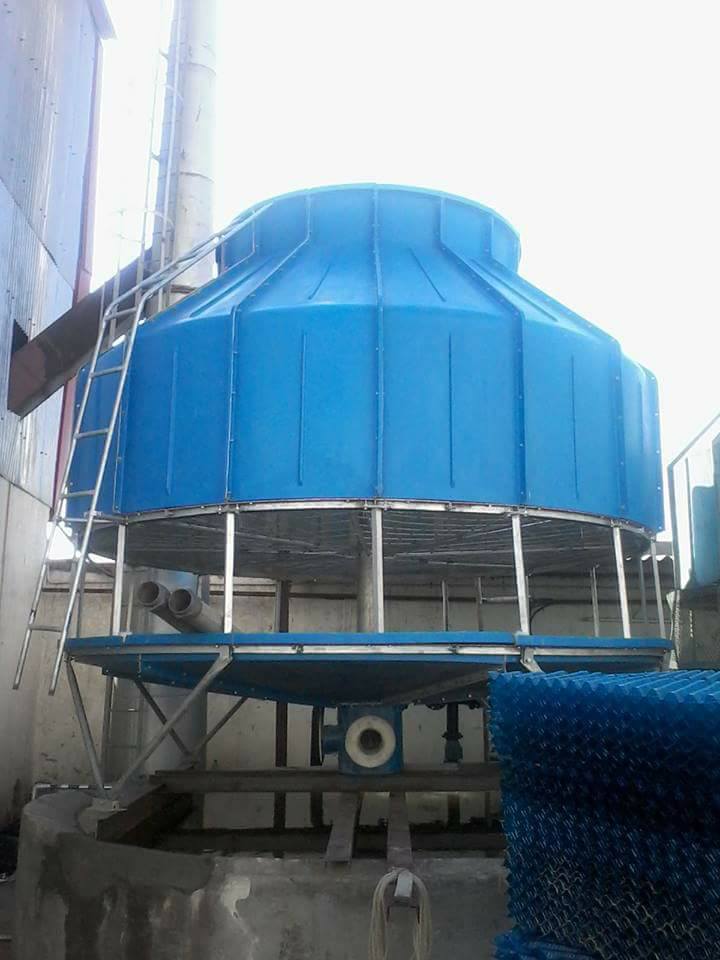Cooling Tower vs. Chiller
Both cooling towers and chillers remove heat from processes, but they work differently and are used in different applications. Here’s a detailed comparison:
| Parameter | Cooling Tower | Chiller |
| Basic Function | Cools water via evaporation (open/closed loop) | Cools water/glycol via refrigeration cycle (vapor compression/absorption) |
| Cooling Method | Evaporative cooling (air + water contact) | Mechanical cooling (compressor, condenser, evaporator) |
| Temperature Range | Cools water to near wet-bulb temp (5-10°F above WBT) | Cools liquid to below wet-bulb temp (as low as 20°F or lower) |
| Energy Efficiency | More efficient (uses air + water evaporation) | Less efficient (requires compressor energy) |
| Water Consumption | High (due to evaporation & bleed-off) | Low (closed-loop system) |
| Maintenance | Requires water treatment (scaling, algae control) | Needs refrigerant checks & compressor maintenance |
| Applications | Power plants, HVAC, refineries, large industrial processes | Data centres, precision cooling, medical facilities, process cooling |
| Initial Cost | Lower (simpler design) | Higher (complex refrigeration system) |
| Operating Cost | Lower (if water is cheap) | Higher (due to electricity for compressors) |
When to Use Which?
- You need large-scale heat rejection (e.g., power plants, industrial processes).
- Ambient wet-bulb temperatures allow sufficient cooling.
- Water availability is good, and evaporation loss is acceptable.
- Energy efficiency is a priority over precise temperature control.
- You need precise temperature control (e.g., labs, data centres, medical cooling).
- The required coolant temperature is below wet-bulb temp.
- Water scarcity is an issue (chillers use closed loops).
- Humid climates make evaporative cooling less effective.
Hybrid Systems (Cooling Tower + Chiller)
Many large facilities (e.g., hospitals, factories) use both:
- Chiller provides low-temperature cooling.
- Cooling tower rejects heat from the chiller’s condenser, improving efficiency.
Final Verdict
- Cooling Tower → Best for high-capacity, cost-effective cooling where water is available.
Chiller → Best for precise, low-temperature cooling in water-scarce or controlled environments.
